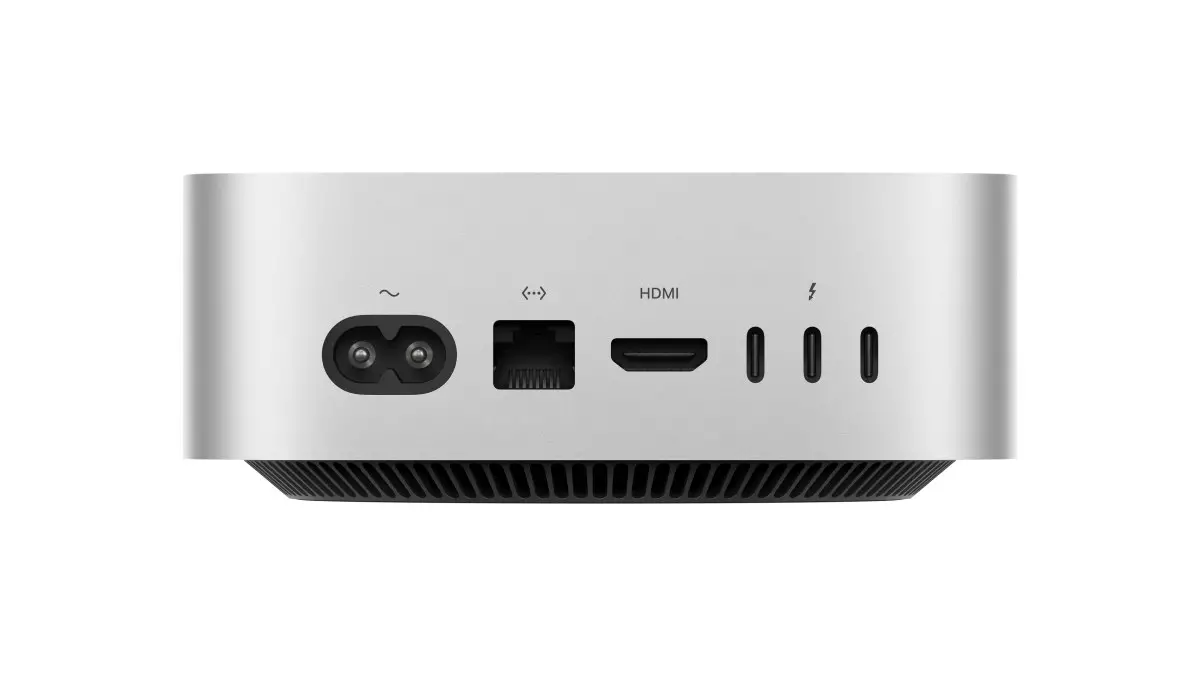Apple’s recent announcement regarding its latest silicon innovation—the M4 chip—marks a significant milestone in the evolution of its computing platform. Tailored specifically for the newly unveiled Mac Mini, this chip introduces a series of enhancements that aim to elevate the performance and efficiency of Apple’s desktop offerings. Standing in the wake of the original M4 released earlier this year for the iPad Pro, this new chip underlines Apple’s commitment to pushing the boundaries of what their devices can achieve.
One of the standout features of the M4 chip is its support for Thunderbolt 5, a technological stride that has caused ripples in the tech community. By doubling the data transfer speed from 120 GB/s to a staggering 273 GB/s, the M4 significantly upgrades the connectivity capabilities of Mac devices. With the M4 Pro variant offering five Thunderbolt 5 ports, users can anticipate seamless interaction with high-speed peripherals, fulfilling the needs of professionals and creatives alike. However, the base M4 still adheres to Thunderbolt 4, which, while still competent, may not satisfy the demands of users looking for ultra-fast data throughput.
Delving into the specifications, the M4 Pro is constructed on a second-generation 3-nanometer architecture—a feat that allows Apple to pack extraordinary power into a compact design. With a maximum of 14 CPU cores—ten focused on performance and four on efficiency—Apple is positioning the M4 Pro to tackle demanding computing tasks with ease. The standard M4 adheres to a slightly lower benchmark, featuring a 10-core CPU configuration. Additionally, the graphics capability is impressive, with the M4 Pro boasting up to a 20-core GPU, while even the base model doesn’t fall short with its 10-core GPU. Apple’s emphasis on robust graphics performance signals a clear intention to cater to the gaming market, a sector that has historically seen Macs as less viable than PCs.
Apple’s bold attempt to morph the Mac into a competitive gaming machine is underscored by a GPU that reportedly doubles ray-tracing speeds compared to previous iterations. As gaming continues to surge in popularity, expectations surrounding device capabilities grow. The latest iteration of the Neural Engine, purportedly up to twice as efficient as earlier models, adds another layer to the gaming experience, supporting advanced computing tasks that enhance realism and interactivity. Such advancements are timely, coinciding with the launch of Apple Intelligence features that promise to augment user experience in diverse applications.
While the technology is undeniably cutting-edge, it comes at a price—both metaphorically and literally. The starting price of the new Mac Mini with the M4 chip is set at $599, but the Pro variant escalates the price to $1,399. Such costs may present a barrier for some consumers, prompting questions about the balance between performance and affordability. Those eager to get their hands on the latest technology can look forward to the preorder launch on Tuesday, with shipping expected by November 8.
Apple’s M4 chip represents a pivotal moment in its product lineup, promising not only enhanced performance but a redefined vision for the future of Mac. As users and developers alike begin to explore the implications of this new chip, the question remains whether Apple can maintain its momentum and fulfill consumer expectations in an ever-evolving technological landscape.

